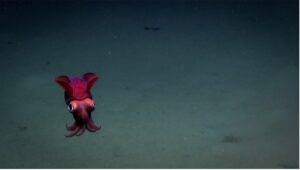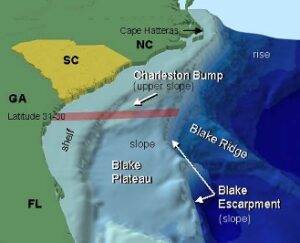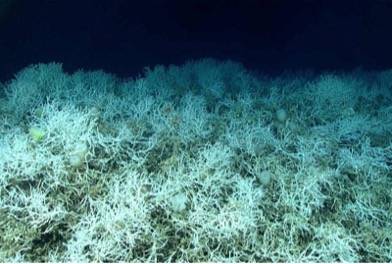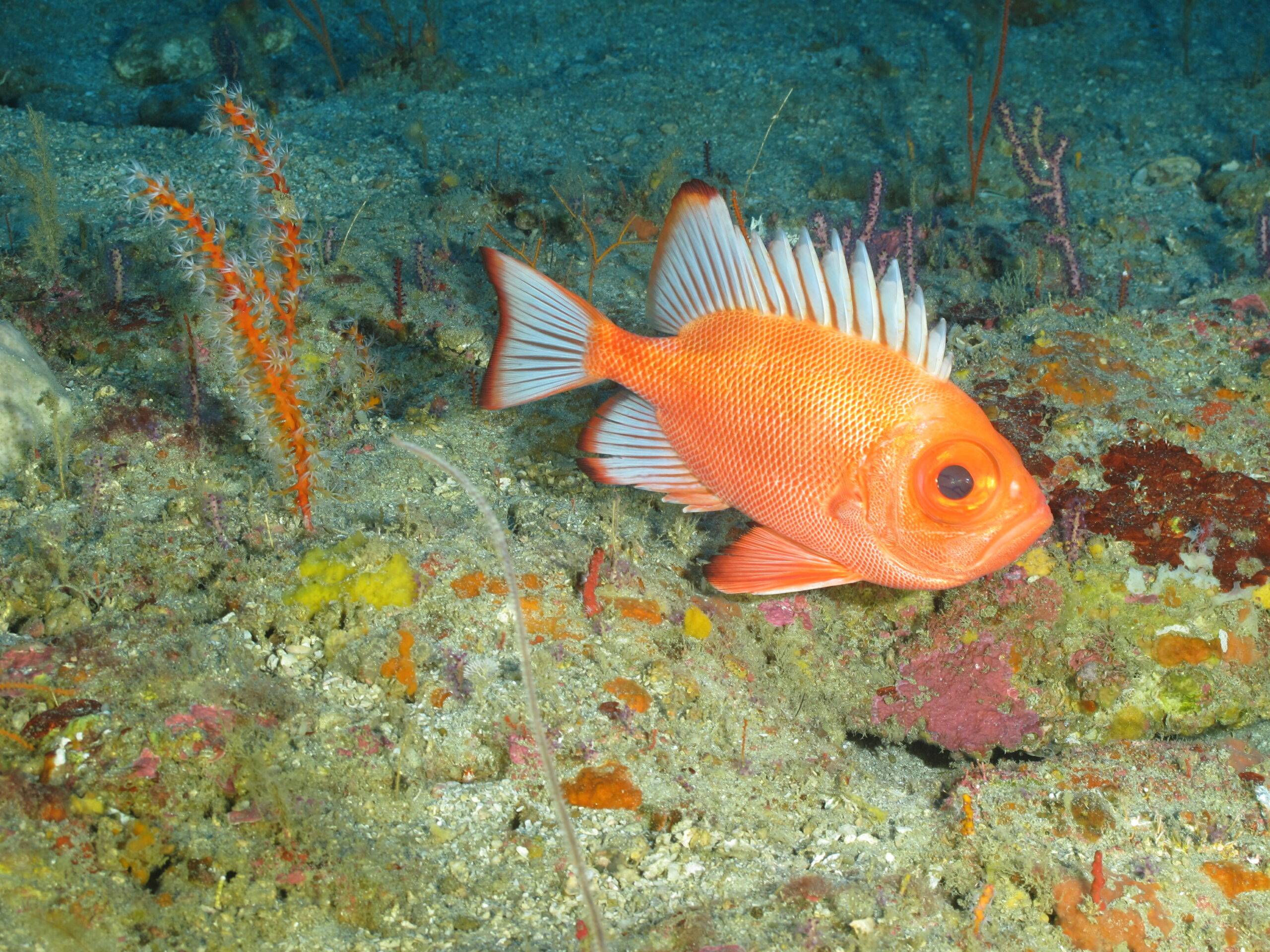Project
Deep-Sea Corals
Deep-sea corals, found at depths greater than 160 feet, are critical ecosystem engineers, and one of the largest deep-sea coral habitat can be found just off the coast of South Carolina.
Want to learn from the experts?
We hosted Exploring the Deep-Sea Corals webinar with Dr. Leslie Sautter – check it out!
Want to see beneath the waves?
Check out these videos covering deep-sea coral explorations off of the South Atlantic coast.
- The Windows to the Deep 2019
- The Windows to the Deep 2021 part 1
- The Windows to the Deep 2021 part 2
Read on to learn more about deep-sea coral biology, ecosystem and ecology!
Deep-sea Corals and South Carolina
Far beneath the surface of the Atlantic Ocean and 50-200 miles off the picturesque coastline of South Carolina lies a habitat of international importance.
A broad, flat expanse known as the Blake Plateau can be found roughly a half-mile deep and spans from Cape Hatteras, North Carolina to the Bahama Banks. This underwater oasis encompasses nearly 50,000 square miles of pristine habitat and is home to one of the largest deep-sea coral habitats on earth.
In 2018, several ocean scientists, including College of Charleston Faculty Dr. Leslie Sautter, embarked on a journey to explore the deep sea of the Blake Plateau. On their exploration they discovered a deep-sea reef system off the coast of South Carolina! This is one of the largest coral reef systems in the world. Along this reef exists the world’s largest deep-sea corals mound, or lithoherm, which extends as high as 300 feet from the sea floor. This vast, interconnected habitat is vital to many fish that are both recreationally and commercially important to South Carolina. These fascinating deep-dwelling species are a thrilling addition to South Carolina’s already exceptional natural habitats.
The Oceanographic Region
The Blake Plateau is a portion of the continental shelf that began forming during the late Triassic period 208 million years ago. This elongated expanse of seafloor is cut off to the east by the Blake Escarpment, which steeply drops to the bottom of the Atlantic Ocean. Directly to the east of Charleston lies a formation known as the “Charleston Bump”. This upper-slope feature sticks out from the rest of the plateau and deflects the Gulf Stream to the northwest.
Traveling from Florida and the Caribbean, the Gulf Stream is the world’s fastest ocean current. Gliding along at peak speeds of 4.4 miles per hour, the Gulf Stream transports warm water from the Caribbean north towards New England before being deflected towards Europe. The Gulf Stream is a crucial component of South Carolina’s natural resources and climate, because it provides the warm water and nutrients necessary to nurture the diversity of marine life. Areas on the Blake Plateau where the Gulf Stream’s flow is the strongest have a high abundance of deep-sea corals, creating a fertile seascape ripe for productivity.
During oceanographic missions along the Atlantic coast in 1880, the steamer ship “Blake” documented several deep-sea coral species. Thus, the Blake Plateau was named for this steamer! The deep-sea corals categorized on this mission were only the beginning of our understanding of the wondrous deep-sea ecosystem lurking below the Atlantic.
Deep-sea Coral Biology
Deep-sea reef-building Lophelia corals are found at depths greater than 160 feet, and unlike their shallow-water counterparts, they don’t require light from the sun. While shallow-water hard corals rely on symbiotic photosynthetic algae, deep-sea reef-building corals gain all their energy through filtering floating organic material that drifts down from the surface zone or are carried by currents. These deep-sea corals can either be hard or soft corals, and can come in many different colors, including white!
Lophelia pertusa, also known simply as Lophelia, is a common deep-sea corals species on the Blake Plateau. These are hard stony corals that build large, complex, branching colonies to aid their filter-feeding mechanisms. As they slowly (a few millimeters per year!) grow larger, they simultaneously create a protective habitat for a wide variety of marine creatures.
When these corals die, the exoskeleton branches break down into coral rubble, providing the perfect conditions for new coral to grow on top of it. Over thousands of years, these coral mounds have grown vertically with the living coral, continually building off those of the past. These vast vertical structures are known as lithoherms, and along with the branching structures of the corals, provide dense habitat structures that scatter the seafloor of the Blake Plateau. Lithoherms along the Blake Plateau range in size from 30-500 feet, the largest of which was discovered off the coast of South Carolina.
Deep-sea Corals Ecosystem and Ecology
Through thousands of years of growth, Deep-sea Corals provide miraculous habitat structures that support marine life. A single 12-inch coral can host up to 2,000 animals, including small fish, crabs, shrimp, and mollusks—many of which are food for prized sport fish.
While they work to facilitate an entire deep-sea ecosystem, they are also uniquely tied to life in the surface zone. Along the Blake Plateau, deep-sea corals process organic material and convert it to useable nutrients. As the Gulf Stream steadily treks up the coast, it acts as a pump to pull those nutrients to the surface. In the surface zone, these nutrients help to support a whole food web, which begins with phytoplankton and ends with tuna, sharks, sea turtles, and even whales!
Want further details? Check out our blog posts on the subject below!
Deep-Sea Corals Series #1: The Depths of the Blake Plateau




